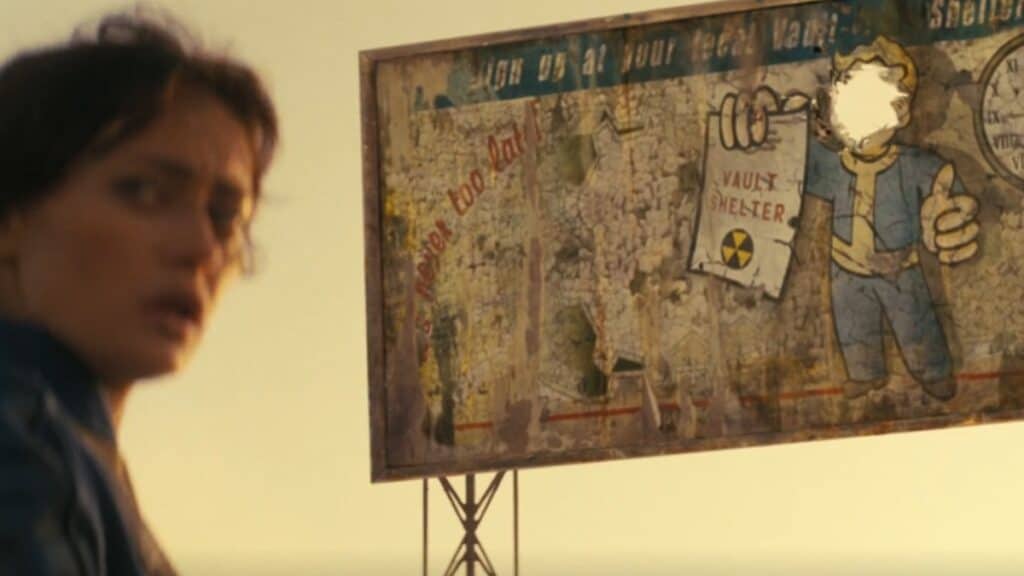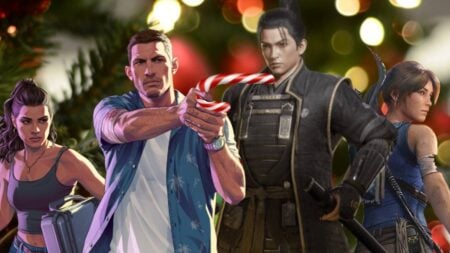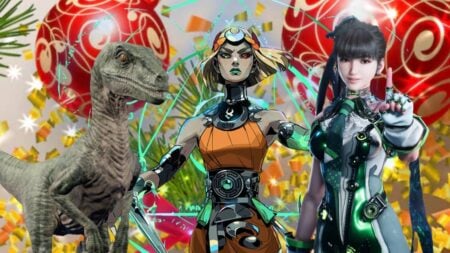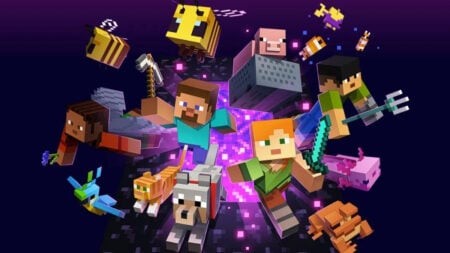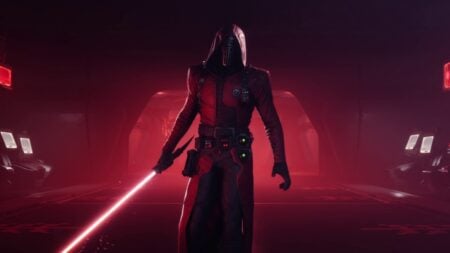Skip To...
Vault Boy has been around for decades and is about as persistent as a Radroach when it comes to representing the Fallout franchise. Initially, his origin story was simpler and lacked depth. Thankfully, Amazon’s Fallout show has given a new dimension to Vault Boy. They gave him a different origin story this time, with a more tragic twist to the mascot character.
He’s no longer just a mascot now. Vault Boy is also technically a main character whose involvement and actions became pivotal to the Fallout canon. And if you’re watching the show at your own pace or one episode per week, it goes without saying, but, spoilers ahead.
Vault Boy is One of the Three Main Characters
Or he was. There’s plenty of time for someone to change their character and temperament after two centuries of wandering and grief. Vault Boy used to be The Ghoul back when he was still the war-veteran-turned-actor, Cooper Howard (played by Walton Goggins). He was a callback to actors like John Wayne and Clint Eastwood, whose claim to fame was cowboy movies and Spaghetti Westerns.
Cooper Howard had plenty of screen time on the show, perhaps even more so than his post-apocalyptic alter-ego, The Ghoul. His pre-bomb flashback segments in the show gave us all an insight into how life and politics worked before the world was plunged into an apocalypse.
In it, Cooper Howard was a prominent yet controversial actor who signed an advertising deal with Vault-Tec to sell Vaults to American citizens.
During one of the Vault-Tec photoshoots, Cooper, wearing a Vault jumpsuit, had an idea to strike up a thumbs-up pose highly reminiscent of Vault Boy’s signature smiling thumbs-up. The rest was history. As Vault-Tec practically owned Cooper’s likeness, they made something out of Cooper’s seemingly innocuous gesture; along came Vault Boy and his origin story.
The Implications of Cooper’s Thumbs-Up
However, Cooper’s accidental conception of Vault Boy and the thumbs-up gesture was anything but harmless.
Cooper was already earning the ire of his fellow celebrities as he sunk deeper into Vault-Tec’s deals. The company wasn’t exactly humanitarian and even sought to profit from war and apocalypse scares.
Vault Boy and his finding out his wife’s dangerous involvement with Vault-Tec’s plans to drop the bombs to ensure their profits was the nail in the coffin for Cooper. At the very beginning of the first show, it was mentioned in passing that Cooper divorced his wife. He also presumably ceased his work and contract with Vault Tec.
Cooper also heavily regretted his thumbs-up gesture. It seemingly made light of a morbid issue and Cooper hated what he stood for at the time. But it was too late since Cooper was already blacklisted in Hollywood for both selling out and war profiteering. That explains why he was scraping by, trying to earn money as an entertainer at kid’s parties.
This small detail about the show also revealed why Cooper wasn’t safe in the Vault and why he became The Ghoul when the bombs dropped. His daughter and wife’s fate is another topic entirely. However, seeing as The Ghoul was looking for his (ex)wife and daughter, they likely survived in a Bud’s Bud cryo-chamber.
Vault Boy’s Origin Story was Entirely Different in the Games
The original Vault Boy origin didn’t always carry the hidden tragic tale of Cooper Howard’s downfall.
The mascot, also called Vault Man in the Fallout games, was designed as a parallel and homage to Rich Uncle Pennybags from Monopoly. It’s still a close spiritual resemblance given what Uncle Pennybags stood for in Monopoly.
He didn’t always look like the upbeat, blond chap he is right now. Vault Boy had transformed from several versions from the first Fallout to Bethesda’s reiteration.
Vault Boy’s thumbs-up gesture also didn’t have any morbid meaning prior to Amazon’s Fallout show. Creators Brian Fargo and Tramell Ray Isaac even refuted any internet theories. Initially, the rumor is that the thumbs up was a rough measurement of how safe one is from a nuclear blast (the show later adopted this theory).
However, Fargo and Isaac simply claimed that Vault Boy’s thumbs-up gesture was merely a sign of positive attitude and delusional optimism. The Amazon adaptation made a homage to this original Vault Boy intent with Cooper reassuring his daughter that everything was alright in the midst of a nuclear blast.
Vault Boy Reminds Cooper of His Failures
The Ghoul thus became Cooper’s reluctant penance (both physically and figuratively) for his mistakes before the bombs dropped. Vault Boy’s shining smile and thumbs-up gesture are all over the wasteland to remind The Ghoul of his past failures.
His memory is certainly intact since The Ghoul would abruptly shoot and vandalize billboards of Vault Boy all across the wasteland. The irony is that Vault Boy’s creator went from being the handsome icon of the American Dream to an ugly, half-dead cynic and murderer.
Cooper had become the villain he fought back in his cowboy movies, Vault Boy’s dark shadow. Corporate greed and 200 years of guilt and grief can do that to a person.

